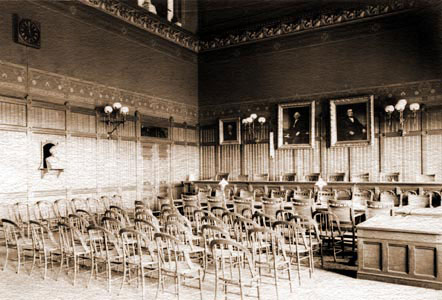
- Directories Home
- Administration - PDF
- Adult Probation
- Bail Services
- Court Service Centers
- Court Support Services
- Family Services
- Family Support Magistrates
- Geographical Areas
- Housing
- Judges
- Judicial Districts
- Juvenile Detention
- Juvenile Matters - PDF
- Juvenile Probation
- Law Libraries
- Magistrates - PDF
- Probate Courts
- Small Claims
- Staff Phone Directory
- State Marshals
- Support Enforcement
- FAQ Home
- About Attorneys
- Adult & Juvenile Offenses for 16-yr olds - PDF
- Adult Probation
- Americans with Disabilities Act
- Bail
- Child Support
- Connecticut Law Journal
- Court Records
- Divorce
- DOJ Civil Rights Complaints
- Domestic Violence
- E-filing FAQs - PDF
- Family
- Foreclosure Mediation
- How can I complain about a judge?
- Jury Service
- Juvenile Matters Links
- Juvenile Probation
- Juvenile Residential Services
- Landlord/Tenant/ Housing
- Language Help (LEP)
- Law Libraries FAQs
- Legal Clinics and Help
- Legal Notices by Publication
- Media
- Minimum Continuing Legal Education
- Online Dispute Resolution
- Prison Rape Elimination Act (PREA)
- Probate Court
- Representing Yourself
- Small Claims
- Traffic Violations
- Victim Services
- What is CSSD?
Overview of the Supreme Court
Virtual Tour of the Supreme Court
History of the Supreme Court
Prior to the creation of the Supreme Court in 1784, the power to review
lower court rulings was vested in the General Assembly, which determined
appeals by examining trial court records. Even after its creation, the
Supreme Court was not completely independent of the executive and
legislative branches, since its members included the Lieutenant Governor,
members of the Council (or upper chamber of the General Assembly), and, in
1794, the Governor.
 In 1806, the number of Superior Court judges was
increased from five to nine and those judges, sitting together, constituted
the Supreme Court, replacing the Governor, Lieutenant Governor and Council
Members. The General Assembly, however, retained the power to overturn the
court's rulings. Twelve years later, in 1818, the Connecticut Constitution
established an independent judiciary, with the Supreme Court of Errors as
the state's highest court. (The words "of Errors" were deleted in 1965). The
creation of an independent judiciary established the third branch of
government, which is responsible for interpreting the laws enacted by the
legislative branch of government.
In 1806, the number of Superior Court judges was
increased from five to nine and those judges, sitting together, constituted
the Supreme Court, replacing the Governor, Lieutenant Governor and Council
Members. The General Assembly, however, retained the power to overturn the
court's rulings. Twelve years later, in 1818, the Connecticut Constitution
established an independent judiciary, with the Supreme Court of Errors as
the state's highest court. (The words "of Errors" were deleted in 1965). The
creation of an independent judiciary established the third branch of
government, which is responsible for interpreting the laws enacted by the
legislative branch of government.
In 1982, in response to an overwhelming Supreme Court docket, Connecticut's voters approved a constitutional amendment creating the intermediate Appellate Court. That court, which consists of nine judges, sits at 75 Elm Street in Hartford.
Home | Common Legal Words | Contact Us | Related Links | Site Index | Website Awards | Policies and Disclaimers | CT.gov | Public Defender Services
Connecticut Judicial Branch © 2017